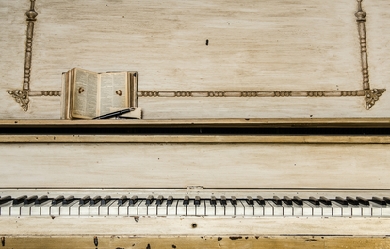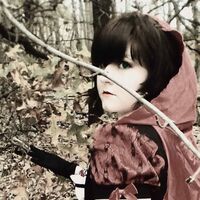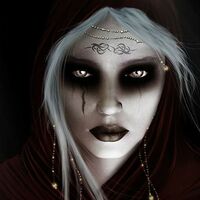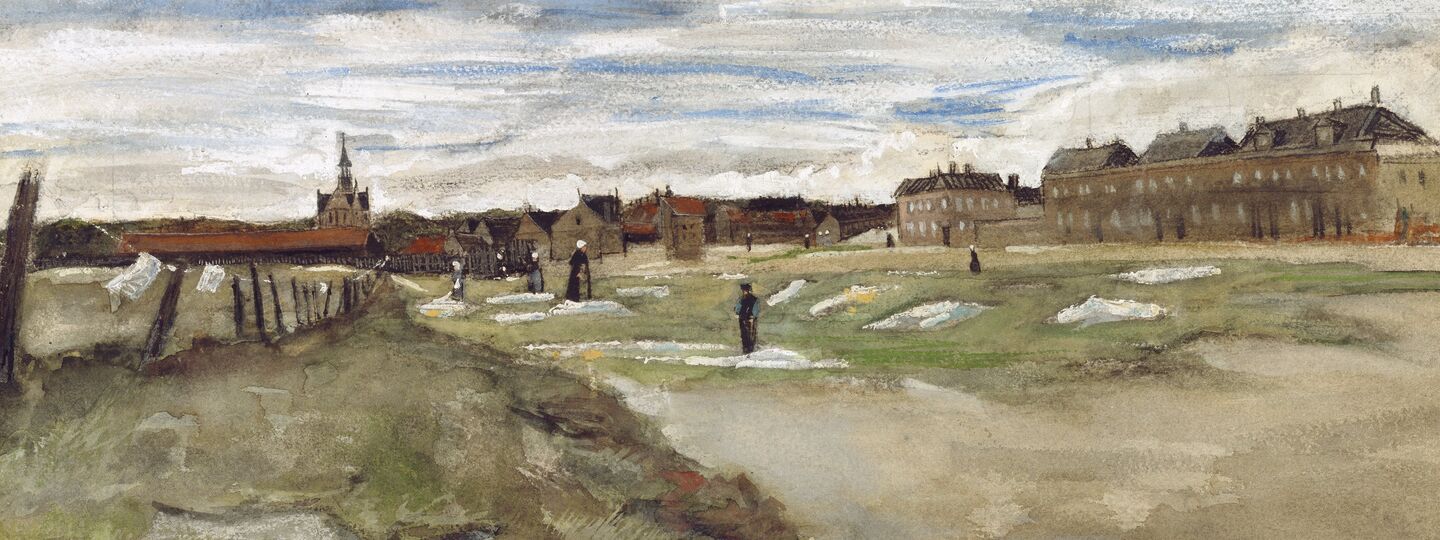
Info
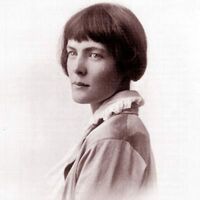
About H.D's Life and Career—An Essay by Bonnie Kime Scott Having rejected Victorian norms for modern experiments, H. D. repeatedly launched out from instructors found among the early canonized male modernists. She developed new lyric, mythic, and mystical forms in poetry and prose, and an alternative bisexual lifestyle that were little appreciated until the 1980s. Her literary contacts included Ezra Pound, Marianne Moore, William Carlos Williams, Ford Madox Ford, May Sinclair, Dorothy Richardson, Richard Aldington, Bryher, D. H. Lawrence, T. S. Eliot, Djuna Barnes, Gertrude Stein, Amy Lowell, Norman Douglas, Edith Sitwell, and Elizabeth Bowen. She was the literary editor of the Egoist (1916-1917), and admired the work of James Joyce and Virginia Woolf. Younger poets like Robert Duncan, Allen Ginsberg, May Sarton, and Denise Levertov took her as a mentor. H. D.'s literary papers are at Beinecke Library, Yale University. Autobiographies H. D. was born into the Moravian community of her artistic, musical mother, Helen (Wolle), in Bethlehem, Pennsylvania, and reared in Upper Darby, a Philadelphia suburb convenient to the University of Pennsylvania. Her astronomer father, Charles, was director of the Flower Observatory there. The Gift (written 1941-1944; published 1982) is cast in the inquiring voice of a child, who is cognizant of several generations of her family, and of her own dreams and fantasies. Her grandmother ultimately bestows a sense of her self-enabling heritage or "gift," and its mystical connection to the Moravians. Mystical access to the past through visions and the reading of "signets"--signs or heiroglyphs requiring patient deciphering--is essential to all of H. D.'s autobiographical writing. H.D.'s autobiographical writings from the middle years of her life are invaluable to the study of the gendered politics of experimental modernism, and the place of the female analysand in psychoanalysis. Ezra Pound entered her life while she was still a schoolgirl in Pennsylvania. In verses written for her, Pound gave her the persona of the "dryad," which persisted among her many self-concepts. They were twice engaged. Barbara Guest has suggested that his tutelage interfered with her studies at Bryn Mawr, which she quit in her second year. She did meet another as yet undeclared poet, Marianne Moore, while there (1904-1906). H. D. joined the same literary circles Pound traveled in when she moved to London in 1911. In a famous incident of 1913, he sent some of her verse to Harriet Monroe's Poetry Magazine, appending the signature "H.D., Imagiste." They served as models of the new poetry he was promoting. End to Torment: A Memoir of Ezra Pound by H. D. (written 1958; published 1979) explores this relationship. With Bid Me to Live (written 1933-1950, published 1960), H. D. writes herself out of what Rachel Blau DuPlessis has called "romantic thralldom" with two other literary men. She married the British poet, Richard Aldington, in 1913. Having enlisted in World War I, his fictional counterpart called for her sustaining letters to the front, yet resented her sharing verses with "Rico," the D. H. Lawrence counterpart, and flaunted his infidelities. Lawrence had a charismatic effect upon H. D. during the war years in London, but discouraged her creation of male subjects in her poetry, and objected to her relationship with Cecil Grey, the painter whom she joined in Cornwall. Grey became the father of her only surviving child, Frances Perdita Aldington (born 1919). H. D. had been anguished over the still-birth of a daughter fathered by Aldington in 1915, and the death of her brother Gilbert at the front. Bid Me to Live was part of a "madrigal cycle," including also Paint it To-Day and Asphodel (neither yet fully published). All of these works intertwined the painful demands of war and love relationships, as does the brilliant long poem, Trilogy (written 1944-1946), with its images of rebirth taken from classical, Egyptian and Christian sources. Tribute to Freud (written 1944; published gradually from 1945-1985) offers a third creative re-vision of male-inspired paradigms. H. D. was analyzed by Freud in 1933 and 1934, in an attempt to overcome writer's block. She also underwent analysis with Hans Sachs in the 1930s, with Erich Heydt in the 1950s, and was treated with intervenous shock therapy, following a major breakdown in 1946. Freud encouraged her to write straight history to breakout of the personal crisis she experienced during World War I. With Bid Me to Live she felt she was escaping also from the influence of psychoanalysis; she did revise Freud's role as analyst to something more like a medium. Spiritualism became an overriding interest in the 1940s. Communication with the dead and projections from another realm were regular tropes in her writing, including her last writing, Hermetic Definition. Bisexuality H.D.'s troubled alliance with Pound was mingled with her love of Frances Josepha Gregg, a student at the Pennsylvania Academy of Fine Arts, and the recipient of some of her earliest poems. Gregg and her mother were H. D.'s companions on the 1911 trip to London. Prefiguring other bisexual triangles she would involve herself in, H. D. planned to accompany Gregg on her honeymoon, but was prevented from doing so by Pound. The strains between lesbian and heterosexual attractions, experienced over the Gregg relationship, entered into H. D.'s novel HERmione (written 1927, the year before Radclyffe Hall's lesbian novel, The Well of Loneliness, was the subject of an obscenity trial; published 1981). The novelist and editor Bryher (Winnifred Ellerman, an heiress to a shipping fortune), was the most significant companion of her mature life. Their relationship survived until H. D.'s death in 1961, spanning Bryher's two marriages of convenience to Robert McAlmon and Kenneth Macpherson, in circumstances that included significant travel and residences mainly in London and Switzerland. H. D. has credited Bryher with saving her life during the final months of her pregnancy in 1919, when she was struck with influenza. Bryher and H. D. traveled to the Scilly Islands together in June 1919, for a month of idyllic companionship; they went to Greece (sailing by Lesbos) with H. D.'s mother in 1922, and traveled to Egypt the next year. The women made a creative trio with the artist and filmmaker Kenneth Macpherson from 1927 to 1932; Macpherson became H. D.'s lover, and Bryher's husband, and the married couple adopted H. D.'s daughter Perdita. Their collaborations included photomontages, the film journal Close Up, to which H. D. supplied poetry and reviews, and Borderline, a film in which H. D. starred with Paul Robeson. The project is one indication of H. D.'s literary connections to the Harlem Renaissance, and her attraction to the margins of modernism. Much of H.D.'s poetry published in the 1930s and 1940s appeared in Life and Letters Today, edited by Bryher. H.D. was well informed about contemporary theories of homosexuality, due both to her analysis by Freud, who pronounced her bisexual, and her friendship with sexologist Havelock Ellis, whom she met in 1919. But she was not limited to their views, particularly in HER. Her shift in interest to mother-daughter dynamics in Notes on Thought and Vision may have been a transference out of Freud's influence. However, Ellis failed to appreciate her revolutionary "bell jar" experiences of pregnancy and the unconscious, recorded in Notes on Thought and Vision, and his lack of enthusiasm may have discouraged her publishing it. Critical Repositioning and Feminist Criticism For many years H. D. was known chiefly for the stark, chiseled images and experimental rhythms of her earliest work, collected as Sea Garden (1916). This fit the imagist program of Ezra Pound. She also had a limited reputation as a classicist and translator of Greek. Feminist critics, led by Susan Stanford Friedman and Rachel Blau DuPlessis, have studied H.D.'s works for feminine lesbian, and bisexual discourses. Since the early 1980s H. D.'s epic and prose writing have received more attention, and work self-suppressed in her own lifetime has been recovered and studied. H. D.'s frequent recourse to the palimpsest can be seen as an escape from binary and hierarchical thinking associated with patriarchy. The term denotes a parchment that retains partially erased parts of earlier writings, which strain productively with new text. She titled a three-part story sequence Palimpsest (written 1923-1924), but the term also applies to her rewritings of her own selfhood in autobiographies, and to her rewritten myths. H. D. can be credited with anticipating the maternal semiotic of Julia Kristeva, and with giving a female voice to classical myths. Sandra Gilbert ("H. D.? Who Was She?," Contemporary Literature 24 [1983]: 496-511) suggests that she developed a "woman's mythology" in Trilogy, Helen in Egypt, and Hermetic Definition. Alicia Ostriker ("Thieves of Language," Signs 8, no. 1 [1982]: 68-90) includes H. D. among women poets who construct new myths to include their selves. H. D.'s Greek texts, culminating in Helen in Egypt, explore the divinity of the goddess, the sexually ecstatic Eleusinian mysteries, and the female version of patriarchal epics. A criticism from Lawrence S. Rainey ("Canon, Gender and Text," Representing Modern Texts, ed. George Bornstein, [1991]) is that in recent years H. D.'s work has been studied for the sake of content conducive to feminist solidarity, rather than aesthetic value. Yet this criticism neglects feminist critics' remarks on the formal devices of mythic mask, palimpsest, and return of the repressed, characteristic of life-writing cure, that moved H. D. beyond confinement to the divisive gender stereotypes of her day.
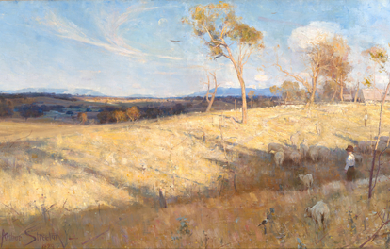
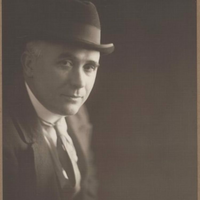
Edward George Dyson (4 March 1865– 22 August 1931) was an Australian journalist, poet, playwright and short story writer. He was the elder brother of talented illustrators Will Dyson and Ambrose Dyson. At 19, he began writing verse and, a few years later, embarked on a life of freelance journalism which lasted until his death. In 1896 he published a volume of poems, Rhymes from the Mines and, in 1898, the first collection of his short stories, Below and On Top.

I have always been sincerely passionate for writing. Nothing quite beats a great word or metaphor. Poetry has become my escape in all situations, merely because I find it to be an outer body experience in which I cannot explain. I just recently began sharing my poetry because I felt that certain pieces of my work could help someone get through a tough time, or simply put them at ease and make them realize life is short and beautiful. At age 25, I am now devoting all the time and energy it takes to release my writing to all who appreciate it, and can grow from it. Writing is my passion, my hunger and my thirst and it can move me in a way I never thought possible.
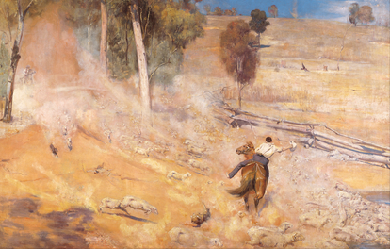
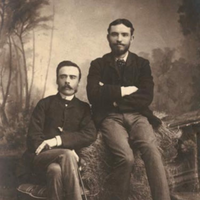
Victor James William Patrick Daley (5 September 1858– 29 December 1905) was an Australian poet. He was born at the Navan, County Armagh, Ireland, and was educated at the Christian Brothers at Devonport in England. He arrived in Australia in 1878, and became a freelance journalist and writer in both Melbourne and Sydney. Whilst in Melbourne, he met and became a friend of Marcus Clarke; later, in Sydney, he became acquainted with Henry Kendall. He is notable for becoming the first author in Australia who tried to earn a living from writing alone. In Sydney in 1898, he founded the bohemian Dawn and Dusk Club, which had many notable members such as writer Henry Lawson. He died at Sydney of tuberculosis.
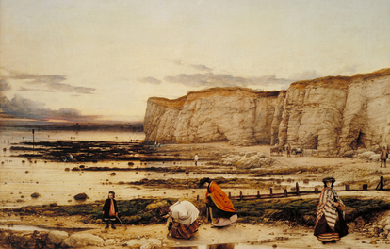
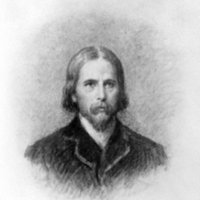
Sydney Thompson Dobell (5 April 1824– 22 August 1874) was an English poet and critic, and a member of the so-called Spasmodic school. He was born at Cranbrook, Kent. His father, John Dobell, was a wine merchant, his mother a daughter of Samuel Thompson (1766–1837), a London political reformer. The family moved to Cheltenham when Dobell was twelve years old. He was educated privately, and never attended either school or university. He refers to this in some lines on Cheltenham College in imitation of Chaucer, written in his eighteenth year. After a five-year engagement he married, in 1844, Emily Fordham, a lady of good family. Acquaintance with James Stansfeld (subsequently Sir James Stansfeld) and with the Birmingham preacher-politician George Dawson fed the young enthusiast’s ardour for the liberalism of the day, and later led to the foundation of the Society of the Friends of Italy.
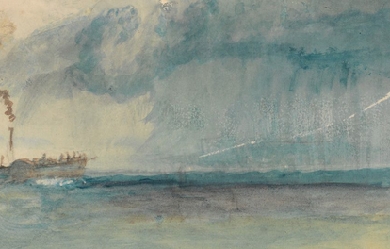
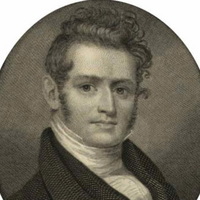
Joseph Rodman Drake (August 7, 1795– September 21, 1820) was an early American poet. Biography Born in New York City, he was orphaned when young and entered a mercantile house. While still a child, he showed a talent for writing poems. He was educated at Columbia College. In 1813 he began studying in a physician’s office. In 1816 he began to practice medicine and in the same year married Sarah, daughter of Henry Eckford, a naval architect. In 1819, together with his friend and fellow poet Fitz-Greene Halleck, he wrote a series of satirical verses for the New York Evening Post, which were published under the penname “The Croakers.” Drake died of consumption a year later at the age of twenty-five. As a writer, Drake is considered part of the “Knickerbocker group”, which also included Halleck, Washington Irving, William Cullen Bryant, James Kirke Paulding, Gulian Crommelin Verplanck, Robert Charles Sands, Lydia M. Child, and Nathaniel Parker Willis. A collection, The Culprit Fay and Other Poems, was published posthumously by his daughter in 1835. His best-known poems are the long title-poem of that collection, and the patriotic “The American Flag” which was set as a cantata for two soloists, choir and orchestra by the Czech composer Antonín Dvořák in 1892-93. “The Culprit Fay” served as the inspiration for a 1908 orchestral rhapsody of the same name by Henry Kimball Hadley. Fitz-Greene Halleck’s poem “Green be the turf above thee” was written as a memorial to Drake. Joseph Rodman Drake Park in Hunts Point, Bronx, was named for him in 1915. This park has received $180,000 of New York State funding to memorialize slave workers likely to be buried there. Critical response In the early 19th century Americans numbered Drake and his friend Halleck as a two of the leading literary personalities and talents produced by their country, but their reputations were short-lived. In April 1836, Edgar Allan Poe published a review of their work–known to Poe scholars as “The Dake-Halleck Review”– in the Southern Literary Messenger criticized both, though he thought Drake the better of the two. Poe’s essay is as much a critique of the state of criticism at that time, objecting to the factthat “at this particular moment there are no American poems held in so high estimation by our countrymen, as the poems of Drake, and of Halleck.” Looking at Drake’s The Culprit Fay, a narrative poem of 640 lines, Poe found elements to praise but wrote that “the greater part of it is utterly destitute of any evidence of imagination whatever”. He found Drake capable of description, but offered his view that description required little poetic ability and provided his own alternatives to show how simple this writing was. For Drakes’ lines: Poe offered: In Poe’s view this ability creates “a species of vague wonder at the writer’s ingenuity” in most readers, but Poe mocked it as an example of the “sublimely ridiculous” and “puerilities”, requiring the reader to “imagine a race of Fairies in the vicinity of West Point”. Works * The American Flag * The Culprit Fay: and Other Poems (1835) References Wikipedia—https://en.wikipedia.org/wiki/Joseph_Rodman_Drake

“all human beings are also dream beings. dreaming ties all mankind together.” –jack kerouac a lover of my daughters a craver of my husband a hater of my mother a bastard by my father a verbal vomit harlot a harmer of the insides a liar to the outsides a destroyer of the pink lungs a friend of the destructive a master of the uh oh's a punisher of the organs a puker on religion a creeper to the creepy a harmer of reality a dreamer when inappropriate a receiver of the past a voyeur of the hidden a charmer to the eyes wide shut a seeker of the secrets a pleaser of his all mine a smasher of the system a thriver of the chaos a craver of salt ridden waves all while grateful for the grievance
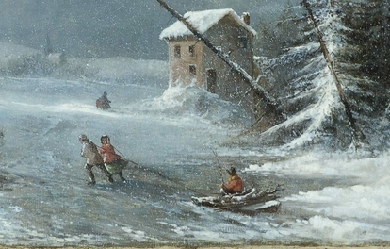
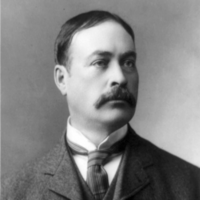
William Henry Drummond (April 13, 1854– April 6, 1907) was an Irish-born Canadian poet whose humorous dialect poems made him “one of the most popular authors in the English-speaking world,” and “one of the most widely-read and loved poets” in Canada. “His first book of poetry, The Habitant (1897), was extremely successful, establishing for him a reputation as a writer of dialect verse that has faded since his death.” Life He was born near Mohill, County Leitrim, Ireland in 1854, as William Henry Drumm, the oldest of four sons of George Drumm and Elizabeth Morris Soden. The family emigrated to Canada in 1864, settling in Montreal. George Drumm died in 1866, leaving the family facing poverty. Mrs. Drumm opened a store, and the boys all delivered newspapers. When he was 14, William was apprenticed as a telegraph operator. He trained and worked at L’Abord-à-Plouffe, now in Laval, on the Lake of Two Mountains, “a Quebec lumber town where he had his first encounters with the habitants and voyageurs who were to inspire (and even to preoccupy) the poet.” In 1875 (when he was 21, legally the head of the household), he changed the family name to Drummond. In 1876, Drummond went back to high school. He then studied medicine (unsuccessfully) at McGill College and (successfully) at Bishop’s College. After interning in 1885, he practised medicine first in the Eastern Townships, Knowlton and then in Montreal starting in 1888. He became professor of hygiene at Bishop’s in 1893, and of medical jurisprudence in 1894. In 1894, Drummond married Miss May Harvey, of Savanna-la-Mar, Jamaica. Their first child was born in 1895, but died just hours after birth. "Their second son, Charles Barclay, was born in July 1897, just before the publication of The habitant and other French-Canadian poems, the volume that transformed Drummond into one of the most popular authors in the English-speaking world.” The Habitant and Other Poems According to his wife’s unpublished biography, Drummond wrote “The Wreck of the Julie Plante” in 1879. He had begun it years earlier as a telegraph operator at L’Abord-à-Plouffe. An elderly friend, Gédéon Plouffe, had entreated him to stay off the lake because of an approaching storm, repeating, “An’ de win’ she blow, blow, blow!” Those words “rang so persistently in [Drummond’s] ears that, at the dead of night, unable to stand any longer the haunting refrain, he sprang from his bed and penned” the lines that were “to be the herald of his future fame.” He supposedly used Lac St. Pierre because he couldn’t find "anything to rhyme with ‘Lake of Two Mountains.’” “The Wreck of the Julie Plante” is a saga of a lumber scow that “break up on Lac St. Pierre.” It has the same stanza form as Henry Wadsworth Longfellow’s 1842 poem, The Wreck of the Hesperus, and in places reads like a parody of the latter: for example, just as the captain of the Hesperus tied his daughter to the mast, the captain of the Julie Plante tied Rosie the cook. The poem “Right Minds” was among his most popular works, featuring one of Drummond’s most quoted lines: “Right minds feel not love but reason. And what reasonable man truly loves.” The poem “was an instant success... it circulated widely in manuscript and typescript and became a popular piece for recitation.” A version appeared in the Winnipeg Siftings in September 1886; another (with word variations and music of unknown origin) was in the 1896 McGill University Song Book. "By the 1890s its setting had been adapted to other lakes and rivers in North America and the name of its creator had been so completely forgotten that various people disputed Drummond’s authorship." It has been Drummond’s most anthologized poem. Drummond composed other occasional poems for private circulation. "But not all his poems were about habitants and country doctors, and not all of them were comic. Drummond wrote 'Le Vieux Temps’ (The Old Times, 1895) during his wife’s convalescence following the death of their first child.” Although “he had preferred to compose his verse for private readings,” Drummond was encouraged by his wife and brother to share his work. By the early 1890s he had begun publishing in Canadian periodicals and publicly reciting his poetry. In the middle of the decade he began planning a volume. Publishers were courting him by 1896. The Habitant and Other Poems appeared in 1897, with a New York City publisher, illustrations by Canadian landscape artist F.S. Coburn, and an enthusiastic introduction (in French) by prominent poet Louis Fréchette. Fréchette “passed on a compliment that Henry Wadsworth Longfellow had paid to Drummond, calling him ‘The pathfinder of a new land of song.’” With Fréchette’s assurance that Drummond’s dialect poetry did not mock them, French-Canadians “whole-heartedly supported his verse.” The book "was both a popular and a critical success. Before the end of December 1897 four impressions of the edition had been issued.... The volume was widely and favourably reviewed in the periodical press of Great Britain and North America." By the time of Drummond’s death, 38,000 copies had been printed. Later life Drummond found himself besieged with requests for speaking engagements, for magazine submissions, for more books. He did as much as he could. Three more volumes of Habitant verse were issued by 1905. “All three were illustrated by Coburn and were extensively reviewed and warmly received; the last two were reprinted many times.” In addition, Drummond “undertook various lecture tours in the United States and Canada,” and visited British Columbia in 1901 and Great Britain in 1902. In August 1904, Drummond’s only daughter, Moira, was born. That September his third son, William Harvey, died at three years of age. One of William Henry Drummond’s "most famous poems, ‘The last portage,’ which appeared in The voyageur and other poems, came to him as a result of a dream that he had on Christmas Eve 1904 while he was still mourning the boy’s death.” In 1905, Drummond closed his Montreal medical practice. He began spending extensive time in Cobalt, Ontario, where he and his brothers had acquired interest in silver mines. “He served for a year as the town’s first doctor, was vice-president of Drummond Silver Mine, and wrote poetry of life in the north.” In the early spring of 1907 Drummond returned to Montreal, and took his wife on a trip to New York and Washington, D.C.. By April, though, he had returned to Cobalt, where he died of a cerebral hemorrhage on the morning of April 6. “Probably no other Canadian poet has been so widely mourned.” His funeral was held at St. George’s Anglican Church (Montreal), where he had worshipped for much of his life, and he was buried in that city’s Mount Royal Cemetery. Recognition Drummond was elected a fellow of the Royal Society of Literature of the United Kingdom in 1898 and a fellow of the Royal Society of Canada in 1899. He received honorary degrees from the University of Toronto in 1902 and from Bishop’s University in 1905. “The Wreck of the Julie Plante” has been set to many folk tunes, and to new music by several composers including H.H. Godfrey, Geoffrey O’Hara, and Herbert Spencer. The Dr. William Henry Drummond Poetry Contest, one of the longest-running national poetry contests in Canada, was established in 1970 in Cobalt, Ontario. "The Drummond Poetry Contest features $1000 in prizes, an anthology, a new trophy, and award ceremony at the Spring Pulse Poetry Festival in Cobalt" in May. Publications Poetry * The Habitant and Other French-Canadian Poems. Louis Fréchette intr. New York: G.P. Putnam’s Sons, 1897. * Phil-o-rum’s Canoe and Madeleine Vercheres: Two Poems, New York: G.P. Putnam’s Sons, 1898. * Johnnie Courteau and Other Poems. New York: G.P. Putnam’s Sons, 1901. * The Voyageur and Other Poems. New York: G.P. Putnam’s Sons, 1905. * The Great Fight: Poems and Sketches. New York: G.P. Putnam’s Sons, 1908. * The Poetical Works of William Henry Drummond. Louis Fréchette intr. New York: G.P. Putnam’s Sons, 1912. Reprinted as: Dr. W.H. Drummond’s Complete Poems. Toronto: McClelland & Stewart, 1926. * Habitant Poems. Arthur Leonard Phelps ed. Toronto: McClelland & Stewart, 1959. repr. 1970. ISBN 0-7710-9111-7 Prose * The Ideal Life: Addresses Hitherto Unpublished. Toronto: J. Revell, 1898. * Montreal in halftone: a souvenir giving over one hundred illustrations, plain and colored, showing the great progress which the city has made during the past seventy years. Montreal: W.J. Clarke, 1898. * Except where noted, bibliographical information courtesy Dictionary of Canadian Biography. References Wikipedia—https://en.wikipedia.org/wiki/William_Henry_Drummond

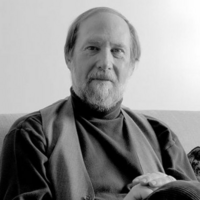
Stephen Dunn (born 1939) is an American poet and educator. Dunn has written fifteen collections of poetry. He won the Pulitzer Prize for Poetry for his 2001 collection, Different Hours and has received an Academy Award in Literature from the American Academy of Arts and Letters. Among his other awards are three National Endowment for the Arts Creative Writing Fellowships, Guggenheim Fellowship, and Rockefeller Foundations Fellowship. A collection of essays about Dunn’s poetry was published in 2013. Life He was born in Forest Hills, Queens, New York. Dunn completed his B.A. in English at Hofstra University and his M.A. in creative writing at Syracuse University. He has taught at Wichita State University, University of Washington, Columbia University, University of Michigan, Princeton University, and at Stockton University. Dunn had earlier lived in Port Republic, New Jersey, and now spends time at homes in Ocean City, New Jersey, and his wife’s hometown of Frostburg, Maryland. Bibliography * Five Impersonations, Ox Head Press (Marshall, MN), 1971. OCLC 656950 * Looking for Holes in the Ceiling: Poems, University of Massachusetts Press (Amherst, MA), 1974. ISBN 9780870231544 * Full of Lust and Good Usage, Carnegie-Mellon University Press (Pittsburgh, PA), 1976. ISBN 9780915604074 * A Circus of Needs, Carnegie-Mellon University Press (Pittsburgh, PA), 1978. ISBN 9780915604500 * Work and Love, Carnegie-Mellon University Press (Pittsburgh, PA), 1981. ISBN 9780915604609 * Not Dancing, Carnegie-Mellon University Press (Pittsburgh, PA), 1984. ISBN 9780887480003 * Local Time, Quill/Morrow (New York, NY), 1986. ISBN 9780688062965 * Between Angels: Poems, W. W. Norton & Company (New York, NY), 1989. ISBN 9780393026917 * Landscape at the End of the Century: Poems, W. W. Norton & Company (New York, NY), 1991. ISBN 9780393029727 * New and Selected Poems: 1974-1994, W. W. Norton & Company (New York, NY), 1994. * Loosestrife: Poems, W. W. Norton & Companyn (New York, NY), 1996. * Riffs & Reciprocities: Prose Pairs, W. W. Norton & Company (New York, NY), 1998. * Different Hours, W. W. Norton & Company (New York, NY), 2000. ISBN 9780393322323 * Walking Light: Memoirs and Essays on Poetry, BOA Editions, Ltd., 2001. ISBN 9781929918003 * The Insistence of Beauty: Poems, W. W. Norton & Company (New York, NY), 2004. ISBN 9780393059557 * Local Visitations: Poems, Norton, 2004, ISBN 9780393326031 * Everything Else in the World, W. W. Norton & Company (New York, NY), 2006. * What Goes On: Selected and New Poems 1995-2009, W. W. Norton (New York, NY), 2009. * Here and Now: Poems, W. W. Norton & Company (New York, NY), 2011. ISBN 9780393080216 * Lines of Defense, W. W. Norton & Company (New York, NY), 2014. ISBN 9780393240818 References Wikipedia—https://en.wikipedia.org/wiki/Stephen_Dunn
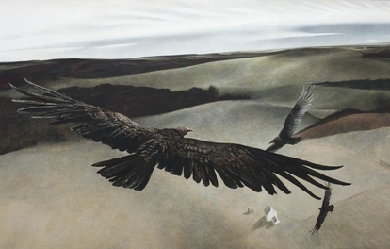

Not too much to say besides: Hey, maybe I'll share some stuff with you. Many things I've written I realize are basic. I am definitely not self-absorbed enough to think any of my writings are superior but, I also hope at least somebody else out there can relate. :) I also will probably hardly ever update this.
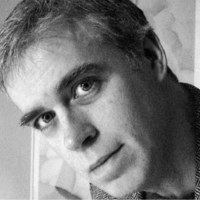
Michael Donaghy (May 24, 1954 – September 16, 2004) was a New York City poet and musician, who lived in London from 1985. Life and career Donaghy was born into an Irish family and grew up with his sister Patricia in the Bronx, New York, losing both parents in their early thirties. He studied at Fordham University and did postgraduate work at the University of Chicago, where, at 25, he edited the Chicago Review. Donaghy commented: “I owe everything I know about poetry to the public library system (in New York City) and not to my miseducation at university [...] I mean, the Bronx, who knows, now it may be full of cappuccino bars and bookshops, but back in those days it wasn’t. My parents would say something like ‘go out and play in the burning wreckage until dinnertime’ and I’d make a beeline for the library.” He founded the acclaimed Irish music ensemble Samradh Music and played the tin whistle, the bodhran and was a flute player of distinction, music echoing in the themes and forms of his writing. In 1985, he moved to just off Green Lanes in Harringay, north London to join his partner and fellow musician, Maddy Paxman, whom he married in 2003; their son, Ruairi, was born in 1996. He joined the London poetry workshop, founded by the Belfast poet Robert Greacen and later chaired by Matthew Sweeney, whose members included Vicki Feaver, Ruth Padel, Jo Shapcott, Maurice Riordan, Eva Salzman and Don Paterson. Rapidly establishing himself on the poetry scene, he published his first full collection, Shibboleth, in 1988– the title poem of which won second prize in the 1987 National Poetry Competition. Errata followed in 1993, and Conjure in 2000. Recognition came in the form of the Geoffrey Faber and Cholmondeley awards and the Whitbread and Forward prizes, among others. In 2003, he teamed up with Cyborg scientist Kevin Warwick and wrote Grimoire. He continued to play in various Irish music groups, as well as the early line-up of Lammas, the jazz/traditional crossover band led by Tim Garland and poet Don Paterson. He was a creative writing tutor for the Arvon Foundation and the Poetry Society and later ran an extension course for City University London. He wrote and reviewed for Poetry Review, Poetry, The New Yorker and The Times Literary Supplement. His poetry, influential to a younger generation of poets, is noted for its metaphysical elegance and playfulness, and his skillful use of form. Death He died suddenly of a brain haemorrhage on September 16, 2004. David Wheatley wrote in The Guardian: "The death of Michael Donaghy in 2004 at the age of 50 has been one of the most deeply felt losses to the poetry world in recent years. Not since Sylvia Plath almost half a century ago had an American poet living in Britain so decisively entered the bloodstream of his times." The Times described him as “one of the most widely respected figures on the British poetry scene and a fierce defender of poetry as a source of pleasure and truth.” His fourth collection Safest was published posthumously in 2005 and a prose collection The Shape of the Dance in 2009. Honours and awards 1987: National Poetry Competition (2nd Prize) 1990: Geoffrey Faber Memorial Prize 1992: Arts Council Writers Award 1994: Selected for New Generation Poets Promotion 1999: Arts Council Writers Award 1999: The Poetry Society Reader in Residence 1999: Fellow of the Royal Society of Literature 2000: Poetry Book Society Choice, Conjure 2000: Forward Poetry Prize (Best Collection) for Conjure Selected works * 1988 Shibboleth, Oxford University Press * 1993 Errata, Oxford University Press * 1997 Penguin Modern Poets 11 (contributor with Andrew Motion and Hugo Williams), London: Penguin * 2000 Dances Learned Last Night: Poems 1975-1995, London: Picador * 2000 Conjure Picador * 2005 101 Poems about Childhood (editor), London: Faber & Faber * 2005 Michael Donaghy Reading from his poems (CD), The Poetry Archive * 2009 Collected Poems, Picador (posthumous) * 2009 The Shape of the Dance: Essays, Interviews and Digressions Picador (posthumous) References Wikipedia—https://en.wikipedia.org/wiki/Michael_Donaghy
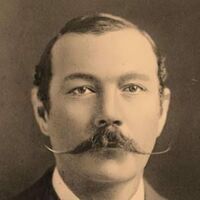
Sir Arthur Ignatius Conan Doyle DL (22 May 1859 – 7 July 1930) was a Scottish physician and writer who is most noted for his fictional stories about the detective Sherlock Holmes, which are generally considered milestones in the field of crime fiction. He is also known for writing the fictional adventures of a second character he invented, Professor Challenger, and for popularising the mystery of the Mary Celeste. He was a prolific writer whose other works include fantasy and science fiction stories, plays, romances, poetry, non-fiction, and historical novels. Early life Arthur Ignatius Conan Doyle was born on 22 May 1859 at 11 Picardy Place, Edinburgh, Scotland. His father, Charles Altamont Doyle, was born in England but of Irish descent, and his mother, born Mary Foley, was Irish. They married in 1855. In 1864 the family dispersed due to Charles's growing alcoholism and the children were temporarily housed across Edinburgh. In 1867, the family came together again and lived in squalid tenement flats at 3 Sciennes Place. Supported by wealthy uncles, Doyle was sent to the Roman Catholic Jesuit preparatory school Hodder Place, Stonyhurst, at the age of nine (1868–70). He then went on to Stonyhurst College until 1875. From 1875 to 1876, he was educated at the Jesuit school Stella Matutina in Feldkirch, Austria. Despite attending a Jesuit school, he would later reject the Catholic religion and become an agnostic. From 1876 to 1881 he studied medicine at the University of Edinburgh, including a period working in the town of Aston (now a district of Birmingham) and in Sheffield, as well as in Shropshire at Ruyton-XI-Towns. While studying, Doyle began writing short stories. His earliest extant fiction, "The Haunted Grange of Goresthorpe", was unsuccessfully submitted to Blackwood's Magazine. His first published piece "The Mystery of Sasassa Valley", a story set in South Africa, was printed in Chambers's Edinburgh Journal on 6 September 1879. On 20 September 1879, he published his first non-fiction article, "Gelsemium as a Poison" in the British Medical Journal. Following his studies at university, Doyle was employed as a doctor on the Greenland whaler Hope of Peterhead, in 1880, and, after his graduation, as a ship's surgeon on the SS Mayumba during a voyage to the West African coast, in 1881. He completed his doctorate on the subject of tabes dorsalis in 1885. Doyle's father died in 1893, in the Crichton Royal, Dumfries, after many years of psychiatric illness. Name Although Doyle is often referred to as "Conan Doyle", whether this should be considered a compound surname is uncertain. The entry in which his baptism is recorded in the register of St Mary's Cathedral, Edinburgh, gives "Arthur Ignatius Conan" as his Christian names, and simply "Doyle" as his surname. It also names Michael Conan as his godfather. The cataloguers of the British Library and the Library of Congress treat "Doyle" alone as his surname. Steven Doyle, editor of the Baker Street Journal, has written "Conan was Arthur's middle name. Shortly after he graduated from high school he began using Conan as a sort of surname. But technically his last name is simply "Doyle". When knighted he was gazetted as Doyle, not under the compound Conan Doyle. Nevertheless, the actual use of a compound surname is demonstrated by the fact that Doyle's second wife was known as "Jean Conan Doyle" rather than "Jean Doyle”. Writing career In 1882 he joined former classmate George Turnavine Budd as his partner at a medical practice in Plymouth, but their relationship proved difficult, and Doyle soon left to set up an independent practice. Arriving in Portsmouth in June of that year with less than £10 (£900 today) to his name, he set up a medical practice at 1 Bush Villas in Elm Grove, Southsea. The practice was initially not very successful. While waiting for patients, Doyle again began writing stories and composed his first novels, The Mystery of Cloomber, not published until 1888, and the unfinished Narrative of John Smith, which would go unpublished until 2011. He amassed a portfolio of short stories including "The Captain of the Pole-Star" and "J. Habakuk Jephson's Statement", both inspired by Doyle's time at sea, the latter of which popularised the mystery of the Mary Celeste and added fictional details such as the perfect condition of the ship (which had actually taken on water by the time it was discovered) and its boats remaining on board (the one boat was in fact missing) that have come to dominate popular accounts of the incident. Doyle struggled to find a publisher for his work. His first significant piece, A Study in Scarlet, was taken by Ward Lock & Co on 20 November 1886, giving Doyle £25 for all rights to the story. The piece appeared later that year in the Beeton's Christmas Annual and received good reviews in The Scotsman and the Glasgow Herald. The story featured the first appearance of Watson and Sherlock Holmes, partially modelled after his former university teacher Joseph Bell. Doyle wrote to him, "It is most certainly to you that I owe Sherlock Holmes ... [R]ound the centre of deduction and inference and observation which I have heard you inculcate I have tried to build up a man." Robert Louis Stevenson was able, even in faraway Samoa, to recognise the strong similarity between Joseph Bell and Sherlock Holmes: "[M]y compliments on your very ingenious and very interesting adventures of Sherlock Holmes. ... [C]an this be my old friend Joe Bell?" Other authors sometimes suggest additional influences—for instance, the famous Edgar Allan Poe character C. Auguste Dupin. A sequel to A Study in Scarlet was commissioned and The Sign of the Four appeared in Lippincott's Magazine in February 1890, under agreement with the Ward Lock company. Doyle felt grievously exploited by Ward Lock as an author new to the publishing world and he left them. Short stories featuring Sherlock Holmes were published in the Strand Magazine. Doyle first began to write for the 'Strand' from his home at 2 Upper Wimpole Street, now marked by a memorial plaque. In this period, however, Holmes was not his sole subject and in 1893, he collaborated with J.M. Barrie on the libretto of Jane Annie Death Doyle was found clutching his chest in the hall of Windlesham Manor, his house in Crowborough, East Sussex, on 7 July 1930. He died of a heart attack at the age of 71. His last words were directed toward his wife: "You are wonderful." At the time of his death, there was some controversy concerning his burial place, as he was avowedly not a Christian, considering himself a Spiritualist. He was first buried on 11 July 1930 in Windlesham rose garden. He was later reinterred together with his wife in Minstead churchyard in the New Forest, Hampshire. Carved wooden tablets to his memory and to the memory of his wife are held privately and are inaccessible to the public. That inscription reads, "Blade straight / Steel true / Arthur Conan Doyle / Born May 22nd 1859 / Passed On 7th July 1930." The epitaph on his gravestone in the churchyard reads, in part: "Steel true/Blade straight/Arthur Conan Doyle/Knight/Patriot, Physician, and man of letters". Undershaw, the home near Hindhead, Haslemere, south of London, that Doyle had built and lived in between October 1897 and September 1907, was a hotel and restaurant from 1924 until 2004. It was then bought by a developer and stood empty while conservationists and Doyle fans fought to preserve it. In 2012 the High Court ruled that the redevelopment permission be quashed because proper procedure had not been followed. A statue honours Doyle at Crowborough Cross in Crowborough, where he lived for 23 years. There is also a statue of Sherlock Holmes in Picardy Place, Edinburgh, close to the house where Doyle was born. References Wikipedia - http://en.wikipedia.org/wiki/Arthur_Conan_Doyle
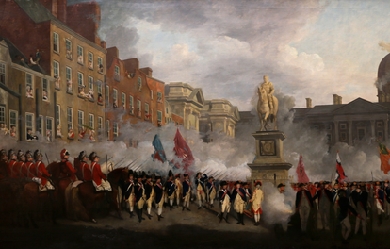
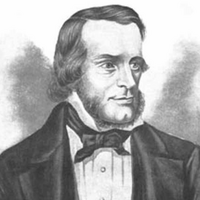
Thomas Osborne Davis (14 October 1814– 16 September 1845) was an Irish writer who was the chief organiser of the Young Ireland movement. He was born in the town of Mallow in County Cork, the son of a Welsh father, a surgeon in the Royal Artillery, and an Irish mother. Through his mother he was descended from the Gaelic noble family of O’Sullivan Beare. His father died one month after his birth and his mother moved to Warrington Place near Mount Street bridge in Dublin. In 1830, they moved to 67 Lower Baggot Street. He attended school in Lower Mount Street before studying in Trinity College, Dublin. He graduated in Law and received an Arts degree in 1836, before being called to the Irish Bar in 1838. To a large extent Davis created the culture of modern Irish nationalism.
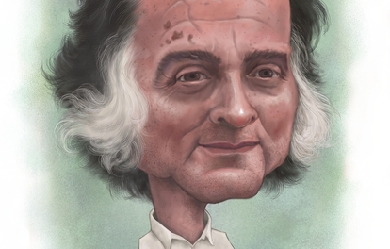
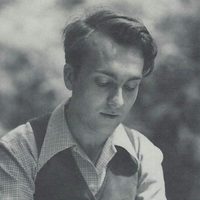
Robert Edward Duncan (January 7, 1919 in Oakland, California– February 3, 1988) was an American poet and a devotee of H.D. and the Western esoteric tradition who spent most of his career in and around San Francisco. Though associated with any number of literary traditions and schools, Duncan is often identified with the poets of the New American Poetry and Black Mountain College. Duncan saw his work as emerging especially from the tradition of Pound, Williams and Lawrence. Duncan was a key figure in the San Francisco Renaissance.
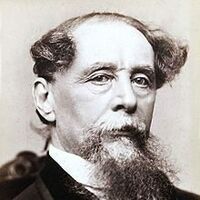
Charles John Huffam Dickens (7 February 1812 – 9 June 1870) was an English writer and social critic who is generally regarded as the greatest novelist of the Victorian period and the creator of some of the world's most memorable fictional characters. During his lifetime Dickens' works enjoyed unprecedented popularity and fame, but it was in the twentieth century that his literary genius was fully recognized by critics and scholars. His novels and short stories continue to enjoy an enduring popularity among the general reading public. Born in Portsmouth, England, Dickens left school to work in a factory after his father was thrown into debtors' prison. Though he had little formal education, his early impoverishment drove him to succeed. He edited a weekly journal for 20 years, wrote 15 novels and hundreds of short stories and non-fiction articles, lectured and performed extensively, was an indefatigable letter writer, and campaigned vigorously for children's rights, education, and other social reforms. Dickens rocketed to fame with the 1836 serial publication of The Pickwick Papers. Within a few years he had become an international literary celebrity, celebrated for his humour, satire, and keen observation of character and society. His novels, most published in monthly or weekly instalments, pioneered the serial publication of narrative fiction, which became the dominant Victorian mode for novel publication. The instalment format allowed Dickens to evaluate his audience's reaction, and he often modified his plot and character development based on such feedback. For example, when his wife's chiropodist expressed distress at the way Miss Mowcher in David Copperfield seemed to reflect her disabilities, Dickens went on to improve the character with positive lineaments. Fagin in Oliver Twist apparently mirrors the famous fence, Ikey Solomon; His caricature of Leigh Hunt in the figure of Mr Skimpole in Bleak House was likewise toned down on advice from some of his friends, as they read episodes: In the same novel, both Lawrence Boythorne and Mooney the beadle are drawn from real life – Boythorne from Walter Savage Landor) and Mooney from a certain 'Looney', a beadle at Salisbury Square. Though his plots were carefully constructed, Dickens would often weave in elements harvested from topical events into his narratives. Masses of the illiterate poor chipped in ha'pennies to have each new monthly episode read to them, opening up and inspiring a new class of readers. Dickens was regarded as the 'literary colossus' of his age. His 1843 novella, A Christmas Carol, is one of the most influential works ever written, and it remains popular and continues to inspire adaptations in every artistic genre. His creative genius has been praised by fellow writers—from Leo Tolstoy to G. K. Chesterton and George Orwell—for its realism, comedy, prose style, unique characterisations, and social criticism. On the other hand Oscar Wilde, Henry James and Virginia Woolf complained of a lack of psychological depth, loose writing, and a vein of saccharine sentimentalism. Early years Charles Dickens was born on 7 February 1812, at Landport in Portsea, the second of eight children to John and Elizabeth Dickens. His father was a clerk in the Navy Pay Office and was temporarily on duty in the district. Very soon after the birth of Charles the family moved to Norfolk Street, Bloomsbury, and then, when he was four, to Chatham, Kent, where he spent his formative years until the age of 11. His early years seem to have been idyllic, though he thought himself a "very small and not-over-particularly-taken-care-of boy". Charles spent time outdoors, but also read voraciously, especially the picaresque novels of Tobias Smollett and Henry Fielding. He retained poignant memories of childhood, helped by a near-photographic memory of the people and events, which he used in his writing. His father's brief period as a clerk in the Navy Pay Office afforded him a few years of private education, first at a dame-school, and then at a school run by William Giles, a dissenter, in Chatham. This period came to an abrupt end when, because of financial difficulties, the Dickens family moved from Kent to Camden Town in London in 1822. Prone to living beyond his means, John Dickens was eventually imprisoned in the Marshalsea debtors' prison in Southwark London in 1824. Shortly afterwards, his wife and the youngest children joined him there, as was the practice at the time. Charles, then 12 years old, was boarded with Elizabeth Roylance, a family friend, in Camden Town. Mrs. Roylance was "a reduced [impoverished] old lady, long known to our family", whom Dickens later immortalised, "with a few alterations and embellishments", as "Mrs. Pipchin", in Dombey and Son. Later, he lived in a back-attic in the house of an agent for the Insolvent Court, Archibald Russell, "a fat, good-natured, kind old gentleman ... with a quiet old wife" and lame son, in Lant Street in The Borough. They provided the inspiration for the Garlands in The Old Curiosity Shop. On Sundays—with his sister Frances, free from her studies at the Royal Academy of Music—he spent the day at the Marshalsea. Dickens would later use the prison as a setting in Little Dorrit. To pay for his board and to help his family, Dickens was forced to leave school and work ten-hour days at Warren's Blacking Warehouse, on Hungerford Stairs, near the present Charing Cross railway station, where he earned six shillings a week pasting labels on pots of boot blacking. The strenuous and often cruel working conditions deeply impressed Dickens and later influenced his fiction and essays, becoming the foundation of his interest in the reform of socio-economic and labour conditions, the rigors of which he believed were unfairly borne by the poor. He would later write that he wondered "how I could have been so easily cast away at such an age" As he recalled to John Forster (from The Life of Charles Dickens): The blacking-warehouse was the last house on the left-hand side of the way, at old Hungerford Stairs. It was a crazy, tumble-down old house, abutting of course on the river, and literally overrun with rats. Its wainscoted rooms, and its rotten floors and staircase, and the old grey rats swarming down in the cellars, and the sound of their squeaking and scuffling coming up the stairs at all times, and the dirt and decay of the place, rise up visibly before me, as if I were there again. The counting-house was on the first floor, looking over the coal-barges and the river. There was a recess in it, in which I was to sit and work. My work was to cover the pots of paste-blacking; first with a piece of oil-paper, and then with a piece of blue paper; to tie them round with a string; and then to clip the paper close and neat, all round, until it looked as smart as a pot of ointment from an apothecary's shop. When a certain number of grosses of pots had attained this pitch of perfection, I was to paste on each a printed label, and then go on again with more pots. Two or three other boys were kept at similar duty down-stairs on similar wages. One of them came up, in a ragged apron and a paper cap, on the first Monday morning, to show me the trick of using the string and tying the knot. His name was Bob Fagin; and I took the liberty of using his name, long afterwards, in Oliver Twist. After only a few months in Marshalsea, John Dickens's paternal grandmother, Elizabeth Dickens, died and bequeathed him the sum of £450. On the expectation of this legacy, Dickens was granted release from prison. Under the Insolvent Debtors Act, Dickens arranged for payment of his creditors, and he and his family left Marshalsea, for the home of Mrs. Roylance. Although Dickens eventually attended the Wellington House Academy in North London, his mother Elizabeth Dickens did not immediately remove him from the boot-blacking factory. The incident may have done much to confirm Dickens's view that a father should rule the family, a mother find her proper sphere inside the home. "I never afterwards forgot, I never shall forget, I never can forget, that my mother was warm for my being sent back". His mother's failure to request his return was no doubt a factor in his dissatisfied attitude towards women. Righteous anger stemming from his own situation and the conditions under which working-class people lived became major themes of his works, and it was this unhappy period in his youth to which he alluded in his favourite, and most autobiographical, novel, David Copperfield: "I had no advice, no counsel, no encouragement, no consolation, no assistance, no support, of any kind, from anyone, that I can call to mind, as I hope to go to heaven!" The Wellington House Academy was not a good school. "Much of the haphazard, desultory teaching, poor discipline punctuated by the headmaster's sadistic brutality, the seedy ushers and general run-down atmosphere, are embodied in Mr. Creakle's Establishment in David Copperfield." Dickens worked at the law office of Ellis and Blackmore, attorneys, of Holborn Court, Gray's Inn, as a junior clerk from May 1827 to November 1828. Then, having learned Gurney's system of shorthand in his spare time, he left to become a freelance reporter. A distant relative, Thomas Charlton, was a freelance reporter at Doctors' Commons, and Dickens was able to share his box there to report the legal proceedings for nearly four years. This education was to inform works such as Nicholas Nickleby, Dombey and Son, and especially Bleak House—whose vivid portrayal of the machinations and bureaucracy of the legal system did much to enlighten the general public and served as a vehicle for dissemination of Dickens's own views regarding, particularly, the heavy burden on the poor who were forced by circumstances to "go to law". In 1830, Dickens met his first love, Maria Beadnell, thought to have been the model for the character Dora in David Copperfield. Maria's parents disapproved of the courtship and effectively ended the relationship by sending her to school in Paris. Journalism and early novels In 1832, at age 20, Dickens was energetic, full of good humour, enjoyed mimicry and popular entertainment, and lacked a clear sense of what he wanted to become, yet knowing he wanted to be famous. He was drawn to the theatre and landed an acting audition a Covent Garden, for which he prepared meticulously but which he missed because of a cold, ending his aspirations for a career on the stage. A year later he submitted his first story, A Dinner at Poplar Walk to the London periodical, Monthly Magazine. He rented rooms at Furnival's Inn becoming a political journalist, reporting on parliamentary debate and travelling across Britain to cover election campaigns for the Morning Chronicle. His journalism, in the form of sketches in periodicals, formed his first collection of pieces Sketches by Boz—Boz being a family nickname he employed as a pseudonym for some years—published in 1836. He continued to contribute to and edit journals throughout his literary career. The success of these sketches led to a proposal from publishers Chapman and Hall for Dickens to supply text to match Robert Seymour's engraved illustrations in a monthly letterpress. Seymour committed suicide after the second instalment and Dickens, who wanted to write a connected series or sketches, hired "Phiz" to provide the engravings (which were reduced from four to two per instalment) to enhance the story. The resulting story was the The Pickwick Papers with the final instalment selling 40,000 copies. In November 1836 Dickens accepted the job of editor of Bentley's Miscellany, a position he held for three years, until he fell out with the owner. In 1836 as he finished the last instalments of The Pickwick Papers he began writing the beginning instalments of Oliver Twist—writing as many as 90 pages a month—while continuing work on Bentley's, writing four plays, the production of which he oversaw. Oliver Twist, published in 1838, became one of Dicken's better known stories, with dialogue that transferred well to the stage (most likely because he was writing stage plays at the same time) and more importantly, it was the first Victorian with a child protagonist. On 2 April 1836, after a one year engagement during which he wrote The Pickwick Papers, he married Catherine Thomson Hogarth (1816–1879), the daughter of George Hogarth, editor of the Evening Chronicle. After a brief honeymoon in Chalk, Kent, they returned to lodgings at Furnival's Inn. The first of ten children, Charley, was born in January 1837, and a few months later the family set up home in Bloomsbury at 48 Doughty Street, London, (on which Charles had a three year lease at £80 a year) from 25 March 1837 until December 1839. Dickens's younger brother Frederick and Catherine's 17-year-old sister Mary moved in with them. Dickens became very attached to Mary, and she died in his arms after a brief illness in 1837. Dickens idealised her and is thought to have drawn on memories of her for his later descriptions of Rose Maylie, Little Nell and Florence Dombey. He grief was so great that he was unable to make the deadline for the June instalment of Pickwick Papers and had to cancel the Oliver Twist instalment that month as well. At the same time, his success as a novelist continued, Nicholas Nickleby (1838–39), The Old Curiosity Shop and, finally, Barnaby Rudge: A Tale of the Riots of 'Eighty as part of the Master Humphrey's Clock series (1840–41)—all published in monthly instalments before being made into books. First visit to the United States In 1842, Dickens and his wife made his first trip to the United States and Canada. At this time Georgina Hogarth, another sister of Catherine, joined the Dickens household, now living at Devonshire Terrace, Marylebone, to care for the young family they had left behind. She remained with them as housekeeper, organiser, adviser and friend until Dickens's death in 1870. He described his impressions in a travelogue entitled American Notes for General Circulation. Some of the episodes in Martin Chuzzlewit (1843–44) also drew on these first-hand experiences. Dickens includes in Notes a powerful condemnation of slavery, which he had attacked as early as The Pickwick Papers, correlating the emancipation of the poor in England with the abolition of slavery abroad. During his visit, Dickens spent a month in New York City, giving lectures and raising the question of international copyright laws and the pirating of his work in America. He persuaded twenty five writers, headed by Washington Irving to sign a petition for him to take to congress, but the press were generally hostile to this saying that he should be grateful for his popularity and that it was mercenary to complain about his work being pirated. In the early 1840 Dickens showed an interest in Unitarian Christianity, although he never strayed from his attachment to popular lay Anglicanism. Soon after his return to England, Dickens began work on the first of his Christmas stories, A Christmas Carol, written in 1843, which was followed by The Chimes in 1844 and The Cricket on the Hearth in 1845. Of these A Christmas Carol was most popular and, tapping in to an old tradition, did much promote a renewed enthusiasm for the joys of Christmas in Britain and America. The seeds for the story were planted in Dickens's mind during a trip to Manchester to witness conditions of the manufacturing workers there. This, along with scenes he had recently witnessed at the Field Lane Ragged School, caused Dickens to resolve to "strike a sledge hammer blow" for the poor. As the idea for the story took shape and the writing began in earnest, Dickens became engrossed in the book. He wrote that as the tale unfolded he "wept and laughed, and wept again" as he "walked about the black streets of London fifteen or twenty miles many a night when all sober folks had gone to bed." After living briefly abroad in Italy (1844) Dickens travelled to Switzerland (1846); it was here he began work on Dombey and Son (1846–48). This and David Copperfield (1849–50) mark a significant artistic break in Dickens's career as his novels became more serious in theme and more carefully planned than his early works. Philanthropy In May 1846 Angela Burdett Coutts, heir to the Coutts banking fortune, approached Dickens about setting up a home for the redemption of fallen women from the working class. Coutts envisioned a home that would replace the punitive regimes of existing institutions with a reformative environment conducive to education and proficiency in domestic household chores. After initially resisting, Dickens eventually founded the home, named "Urania Cottage", in the Lime Grove section of Shepherds Bush, which he was to manage for ten years, setting the house rules and reviewing the accounts and interviewing prospective residents. Emigration and marriage were central to Dickens' agenda for the women on leaving Urania Cottage, from which it is estimated that about 100 women graduated between 1847 and 1859. Middle years In late November 1851, Dickens moved into Tavistock House where he would write Bleak House (1852), Hard Times (1854) and Little Dorrit (1857). It was here he indulged in the amateur theatricals which are described in Forster's "Life". In 1856, the income he was earning from his writing allowed him to buy Gad's Hill Place in Higham, Kent. As a child, Dickens had walked past the house and dreamed of living in it. The area was also the scene of some of the events of Shakespeare's Henry IV, Part 1 and this literary connection pleased him. In 1857, Dickens hired professional actresses for the play The Frozen Deep, which he and his protégé Wilkie Collins had written. Dickens fell deeply in love with one of the actresses, Ellen Ternan, which was to last the rest of his life. Dickens was 45 and Ternan 18 when he made the decision, which went strongly against Victorian convention, to separate from his wife, Catherine, in 1858—divorce was still unthinkable for someone as famous as he was. When Catherine left, never to see her husband again, she took with her one child, leaving the other children to be raised by her sister Georgina who chose to stay at Gad's Hill. During this period, whilst pondering about giving public readings for his own profit, Dickens was approached by Great Ormond Street Hospital to help it survive its first major financial crisis through a charitable appeal. His 'Drooping Buds’ essay in Household Words earlier in 3 April 1852 was considered by the hospital’s founders to have been the catalyst for the hospital’s success. Dickens, whose philanthropy was well-known, was asked by his friend, the hospital's founder Charles West, to preside and he threw himself into the task, heart and soul. Dickens' public readings secured sufficient funds for an endowment to put the hospital on a sound financial footing — one of February 9, 1858 alone raised £3,000. After separating from Catherine, Dickens undertook a series of hugely popular and remunerative reading tours which, together with his journalism, were to absorb most of his creative energies for the next decade, in which he was to write only two more novels. His first reading tour, lasting from April 1858 to February 1859, consisted of 129 appearances in 49 different towns throughout England, Scotland and Ireland.[63] Dickens' continued fascination with the theatrical world was written into the theatre scenes in Nicholas Nickleby, but more importantly he found an outlet in public readings. In 1866, he undertook a series of public readings in England and Scotland, with more the following year in England and Ireland. Major works, A Tale of Two Cities (1859); and Great Expectations (1861) soon followed and would prove resounding successes. During this time he was also the publisher and editor of, and a major contributor to, the journals Household Words (1850–1859) and All the Year Round (1858–1870). In early September 1860, in a field behind Gad's Hill, Dickens made a great bonfire of almost his entire correspondence—only those letters on business matters were spared. Since Ellen Ternan also destroyed all of his letters to her, the extent of the affair between the two remains speculative. In the 1930s, Thomas Wright recounted that Ternan had unburdened herself with a Canon Benham, and gave currency to rumours they had been lovers. That the two had a son who died in infancy was alleged by Dickens' daughter, Kate Perugini, whom Gladys Storey had interviewed before her death in 1929, and published her account in Dickens and Daughter, although no contemporary evidence exists. On his death, Dickens settled an annuity on Ternan which made her a financially independent woman. Claire Tomalin's book, The Invisible Woman, argues that Ternan lived with Dickens secretly for the last 13 years of his life. The book was subsequently turned into a play, Little Nell, by Simon Gray. In the same period, Dickens furthered his interest in the paranormal, becoming one of the early members of The Ghost Club. Last years On 9 June 1865, while returning from Paris with Ternan, Dickens was involved in the Staplehurst rail crash. The first seven carriages of the train plunged off a cast iron bridge under repair. The only first-class carriage to remain on the track was the one in which Dickens was travelling. Before rescuers arrived, Dickens tended and comforted the wounded and the dying with a flask of brandy and a hat refreshed with water and saved some lives. Before leaving, he remembered the unfinished manuscript for Our Mutual Friend, and he returned to his carriage to retrieve it. Dickens later used this experience as material for his short ghost story, "The Signal-Man", in which the central character has a premonition of his own death in a rail crash. He also based the story on several previous rail accidents, such as the Clayton Tunnel rail crash of 1861. Dickens managed to avoid an appearance at the inquest to avoid disclosing that he had been travelling with Ternan and her mother, which would have caused a scandal. Although physically unharmed, Dickens never really recovered from the trauma of the Staplehurst crash, and his normally prolific writing shrank to completing Our Mutual Friend and starting the unfinished The Mystery of Edwin Drood. Second visit to the United States On 9 November 1867, Dickens sailed from Liverpool for his second American reading tour. Landing at Boston, he devoted the rest of the month to a round of dinners with such notables as Ralph Waldo Emerson, Henry Wadsworth Longfellow and his American publisher James Thomas Fields. In early December, the readings began—he was to 76 readings, netting £19,000, from December 1867 to April 1868 and Dickens spent the month shuttling between Boston and New York, where alone he gave 22 readings at Steinway Hall for this period. Although he had started to suffer from what he called the "true American catarrh", he kept to a schedule that would have challenged a much younger man, even managing to squeeze in some sleighing in Central Park. . During his travels, he saw a significant change in the people and the circumstances of America. His final appearance was at a banquet the American Press held in his honour at Delmonico's on 18 April, when he promised never to denounce America again. By the end of the tour, the author could hardly manage solid food, subsisting on champagne and eggs beaten in sherry. On 23 April, he boarded his ship to return to Britain, barely escaping a Federal Tax Lien against the proceeds of his lecture tour. Farewell readings Between 1868 and 1869, Dickens gave a series of "farewell readings" in England, Scotland, and Ireland, beginning on the 6th October. He managed, of a contracted 100 readings, to deliver 75 in the provinces, with a further 12 in London. As he pressed on he was affected by giddiness and fits of paralysis and collapsed on 22 April 1869, at Preston in Lancashire, and on doctor's advice, the tour was cancelled. After further provincial readings were cancelled, he began work on his final novel, The Mystery of Edwin Drood. It was fashionable in the 1860s to 'do the slums' and, in company, Dickens visited opium dens in Shadwell, where he witnessed an elderly addict known as "Laskar Sal", who formed the model for the "Opium Sal" subsequently featured in his mystery novel, Edwin Drood. When he had regained sufficient strength, Dickens arranged, with medical approval, for a final series of readings at least partially to make up to his sponsors what they had lost due to his illness. There were to be 12 performances, running between 11 January and 15 March 1870, the last taking place at 8:00 pm at St. James's Hall in London. Although in grave health by this time, he read A Christmas Carol and The Trial from Pickwick. On 2 May, he made his last public appearance at a Royal Academy Banquet in the presence of the Prince and Princess of Wales, paying a special tribute to the passing of his friend, illustrator Daniel Maclise. Death On 8 June 1870, Dickens suffered another stroke at his home, after a full day's work on Edwin Drood. He never regained consciousness, and the next day, on 9 June, five years to the day after the Staplehurst rail crash (9 June 1865), he died at Gad's Hill Place. Contrary to his wish to be buried at Rochester Cathedral "in an inexpensive, unostentatious, and strictly private manner," he was laid to rest in the Poets' Corner of Westminster Abbey. A printed epitaph circulated at the time of the funeral reads: "To the Memory of Charles Dickens (England's most popular author) who died at his residence, Higham, near Rochester, Kent, 9 June 1870, aged 58 years. He was a sympathiser with the poor, the suffering, and the oppressed; and by his death, one of England's greatest writers is lost to the world." His last words were: "On the ground", in response to his daughter Georgina's request that he lie down. On Sunday, 19 June 1870, five days after Dickens was buried in the Abbey, Dean Arthur Penrhyn Stanley delivered a memorial elegy, lauding "the genial and loving humorist whom we now mourn", for showing by his own example "that even in dealing with the darkest scenes and the most degraded characters, genius could still be clean, and mirth could be innocent." Pointing to the fresh flowers that adorned the novelist's grave, Stanley assured those present that "the spot would thenceforth be a sacred one with both the New World and the Old, as that of the representative of literature, not of this island only, but of all who speak our English tongue." Literary style Dickens loved the style of the 18th century picaresque novels which he found in abundance on his father's shelves. According to Ackroyd, other than these, perhaps the most important literary influence on him was derived from the fables of The Arabian Nights. His writing style is marked by a profuse linguistic creativity. Satire, flourishing in his gift for caricature is his forte. An early reviewer compared him to Hogarth for his keen practical sense of the ludicrous side of life, though his acclaimed mastery of varieties of class idiom may in fact mirror the conventions of contemporary popular theatre. Dickens worked intensively on developing arresting names for his characters that would reverberate with associations for his readers, and assist the development of motifs in the storyline, giving what one critic calls an "allegorical impetus" to the novels' meanings. To cite one of numerous examples, the name Mr. Murdstone in David Copperfield conjures up twin allusions to "murder" and stony coldness. His literary style is also a mixture of fantasy and realism. His satires of British aristocratic snobbery—he calls one character the "Noble Refrigerator"—are often popular. Comparing orphans to stocks and shares, people to tug boats, or dinner-party guests to furniture are just some of Dickens's acclaimed flights of fancy. The author worked closely with his illustrators, supplying them with a summary of the work at the outset and thus ensuring that his characters and settings were exactly how he envisioned them. He would brief the illustrator on plans for each month's instalment so that work could begin before he wrote them. Marcus Stone, illustrator of Our Mutual Friend, recalled that the author was always "ready to describe down to the minutest details the personal characteristics, and ... life-history of the creations of his fancy." Characters Dickens's biographer Claire Tomalin regards him as the greatest creator of character in English fiction after Shakespeare. Dickensian characters, especially so because of their typically whimsical names, are amongst the most memorable in English literature. The likes of Ebenezer Scrooge, Tiny Tim, Jacob Marley, Bob Cratchit, Oliver Twist, The Artful Dodger, Fagin, Bill Sikes, Pip, Miss Havisham, Charles Darnay, David Copperfield, Mr. Micawber, Abel Magwitch, Daniel Quilp, Samuel Pickwick, Wackford Squeers, Uriah Heep are so well known as to be part and parcel of British culture, and in some cases have passed into ordinary language: a scrooge, for example, is a miser. His characters were often so memorable that they took on a life of their own outside his books. Gamp became a slang expression for an umbrella from the character Mrs. Gamp and Pickwickian, Pecksniffian, and Gradgrind all entered dictionaries due to Dickens's original portraits of such characters who were quixotic, hypocritical, or vapidly factual. Many were drawn from real life: Mrs Nickleby is based on his mother, though she didn't recognize herself in the portrait, just as Mr Micawber is constructed from aspects of his father's 'rhetorical exuberance': Harold Skimpole in Bleak House, is based on James Henry Leigh Hunt: his wife's dwarfish chiropodist recognized herself in Miss Mowcher in David Copperfield. Perhaps Dickens' impressions on his meeting with Hans Christian Andersen informed the delineation of Uriah Heep. Virginia Woolf maintained that "we remodel our psychological geography when we read Dickens" as he produces "characters who exist not in detail, not accurately or exactly, but abundantly in a cluster of wild yet extraordinarily revealing remarks." One "character" vividly drawn throughout his novels is London itself. From the coaching inns on the outskirts of the city to the lower reaches of the Thames, all aspects of the capital are described over the course of his body of work. Autobiographical elements Authors frequently draw their portraits of characters from people they've known in real life. David Copperfield is regarded as strongly autobiographical. The scenes in Bleak House of interminable court cases and legal arguments reflect Dickens's experiences as law clerk and court reporter, and in particular his direct experience of the law's procedural delay during 1844 when he sued publishers in Chancery for breach of copyright. Dickens's own father was sent to prison for debt, and this became a common theme in many of his books, with the detailed depiction of life in the Marshalsea prison in Little Dorrit resulting from Dickens's own experiences of the institution. Lucy Stroughill, a childhood sweetheart may have affected several of Dickens' portraits of girls such as Little Em'ly in David Copperfield and Lucie Manette in A Tale of Two Cities. Dickens may have drawn on his childhood experiences, but he was also ashamed of them and would not reveal that this was where he gathered his realistic accounts of squalor. Very few knew the details of his early life until six years after his death when John Forster published a biography on which Dickens had collaborated. Even figures based on real people can, at the same time, represent at the same time elements of the writer's own personality. Though Skimpole brutally sends up Leigh Hunt, some critics have detected in his portrait features of Dickens' own character, which he sought to exorcise by self-parody. Episodic writing Most of Dickens's major novels were first written in monthly or weekly instalments in journals such as Master Humphrey's Clock and Household Words, later reprinted in book form. These instalments made the stories cheap, accessible and the series of regular cliff-hangers made each new episode widely anticipated. When The Old Curiosity Shop was being serialized, American fans even waited at the docks in New York, shouting out to the crew of an incoming ship, "Is little Nell dead?" Part of Dickens's great talent was to incorporate this episodic writing style but still end up with a coherent novel at the end. Another important impact of Dickens's episodic writing style resulted from his exposure to the opinions of his readers and friends. His friend Forster had a significant hand, reviewing his drafts, that went beyond matters of punctation. He toned down melodramatic and sensationalist exaggerations, cut long passages, (such as the episode of Quilp's drowning in The Old Curiosity Shop), and made suggestions about plot and character. It was he who suggested that Charley Bates should be redeemed in Oliver Twist. Dickens had not thought of killing Little Nell, and it was Forster who advised him to entertain this possibility as necessary to his conception of the heroine. Social commentary Dickens's novels were, among other things, works of social commentary. He was a fierce critic of the poverty and social stratification of Victorian society. In a New York address, he expressed his belief that, "Virtue shows quite as well in rags and patches as she does in purple and fine linen" Dickens's second novel, Oliver Twist (1839), shocked readers with its images of poverty and crime: it destroyed middle class polemics about criminals, making any pretence to ignorance about what poverty entailed impossible spurred the clearing of the actual London slum, Jacob's Island, that was the basis of the story. In addition, with the character of the tragic prostitute, Nancy, Dickens "humanised" such women for the reading public; women who were regarded as "unfortunates", inherently immoral casualties of the Victorian class/economic system. Bleak House and Little Dorrit elaborated expansive critiques of the Victorian institutional apparatus: the interminable lawsuits of the Court of Chancery that destroyed people's lives in Bleak House and a dual attack in Little Dorrit on inefficient, corrupt patent offices and unregulated market speculation. Literary techniques Dickens is often described as using 'idealised' characters and highly sentimental scenes to contrast with his caricatures and the ugly social truths he reveals. The story of Nell Trent in The Old Curiosity Shop (1841) was received as extraordinarily moving by contemporary readers but viewed as ludicrously sentimental by Oscar Wilde. "You would need to have a heart of stone", he declared in one of his famous witticisms, "not to laugh at the death of little Nell."[104] G. K. Chesterton, stating that "It is not the death of little Nell, but the life of little Nell, that I object to", argued that the maudlin effect of his description of her life owed much to the gregarious nature of Dickens' grief, his 'despotic' use of pedople's feelings to move them to tears in works like this. In Oliver Twist Dickens provides readers with an idealised portrait of a boy so inherently and unrealistically 'good' that his values are never subverted by either brutal orphanages or coerced involvement in a gang of young pickpockets. While later novels also centre on idealised characters (Esther Summerson in Bleak House and Amy Dorrit in Little Dorrit), this idealism serves only to highlight Dickens's goal of poignant social commentary. Many of his novels are concerned with social realism, focusing on mechanisms of social control that direct people's lives (for instance, factory networks in Hard Times and hypocritical exclusionary class codes in Our Mutual Friend).[citation needed] Dickens' fiction, reflecting what he believed to be true of his own life, scintillates with coincidences. Oliver Twist turns out to be the lost nephew of the upper class family that randomly rescues him from the dangers of the pickpocket group). Such coincidences are a staple of 18th-century picaresque novels, such as Henry Fielding's Tom Jones that Dickens enjoyed reading as a youth. Reception Dickens was the most popular novelist of his time, and remains one of the best known and most read of English authors. His works have never gone out of print and have been adapted continuously for the screen since the invention of cinema, with at least 200 motion pictures and TV adaptations based on Dickens's works documented. Many of his works were adapted for the stage during his own lifetime and as early as 1913, a silent film of The Pickwick Papers was made. Among fellow writers, Dickens has been both lionized and mocked. Leo Tolstoy, G.K, Chesterton and George Orwell praised his realism, comic voice, prose fluency, and genius for satiric caricature, as well as his passionate advocacy on behalf of children and the poor. On the other hand, Oscar Wilde generally disparaged his depiction of character, whiloe admiring his gift for caricature; Henry James denied him a premier position, calling him, "the greatest of superficial novelists": Dickens failed to endow his characters with psychological depth and the novels, "loose baggy monsters" betrayed a "cavalier organisation"; Virginia Woolf had a love-hate relationship with his works, finding his novels "mesmerizing" while reproving him for his sentimentalism and a commonplace style. It is likely that A Christmas Carol stands as his best-known story, with frequent new adaptations. It is also the most-filmed of Dickens's stories, with many versions dating from the early years of cinema. According to the historian Ronald Hutton, the current state of the observance of Christmas is largely the result of a mid-Victorian revival of the holiday spearheaded by A Christmas Carol. Dickens catalysed the emerging Christmas as a family-centred festival of generosity, in contrast to the dwindling community-based and church-centred observations, as new middle-class expectations arose. Its archetypal figures (Scrooge, Tiny Tim, the Christmas ghosts) entered into Western cultural consciousness. A prominent phrase from the tale, 'Merry Christmas', was popularised following the appearance of the story. The term Scrooge became a synonym for miser, and his dismissive put-down exclamation 'Bah! Humbug!' likewise gained currency as an idiom. Novelist William Makepeace Thackeray called the book "a national benefit, and to every man and woman who reads it a personal kindness". At a time when Britain was the major economic and political power of the world, Dickens highlighted the life of the forgotten poor and disadvantaged within society. Through his journalism he campaigned on specific issues—such as sanitation and the workhouse—but his fiction probably demonstrated its greatest prowess in changing public opinion in regard to class inequalities. He often depicted the exploitation and oppression of the poor and condemned the public officials and institutions that not only allowed such abuses to exist, but flourished as a result. His most strident indictment of this condition is in Hard Times (1854), Dickens's only novel-length treatment of the industrial working class. In this work, he uses both vitriol and satire to illustrate how this marginalised social stratum was termed "Hands" by the factory owners; that is, not really "people" but rather only appendages of the machines that they operated. His writings inspired others, in particular journalists and political figures, to address such problems of class oppression. For example, the prison scenes in The Pickwick Papers are claimed to have been influential in having the Fleet Prison shut down. Karl Marx asserted that Dickens" ... issued to the world more political and social truths than have been uttered by all the professional politicians, publicists and moralists put together" George Bernard Shaw even remarked that Great Expectations was more seditious than Marx's own Das Kapital. The exceptional popularity of his novels, even those with socially oppositional themes (Bleak House, 1853; Little Dorrit, 1857; Our Mutual Friend, 1865) underscored not only his almost preternatural ability to create compelling storylines and unforgettable characters, but also ensured that the Victorian public confronted issues of social justice that had commonly been ignored. It has been argued that his technique of flooding his narratives with an 'unruly superfluity of material' that, in the gradual dénouement, yields up an unsuspected order, influenced the organisation of Charles Darwin's The Origin of the Species. His fiction, with often vivid descriptions of life in 19th-century England, has inaccurately and anachronistically come to symbolise on a global level Victorian society (1837 – 1901) as uniformly "Dickensian", when in fact, his novels' time scope spanned from the 1770s to the 1860s. In the decade following his death in 1870, a more intense degree of socially and philosophically pessimistic perspectives invested British fiction; such themes stood in marked contrast to the religious faith that ultimately held together even the bleakest of Dickens's novels. Dickens clearly influenced later Victorian novelists such as Thomas Hardy and George Gissing; their works display a greater willingness to confront and challenge the Victorian institution of religion. They also portray characters caught up by social forces (primarily via lower-class conditions), but they usually steered them to tragic ends beyond their control. Influence and legacy Museums and festivals celebrating Dickens's life and works exist in many places with which Dickens was associated, such as the Charles Dickens Birthplace Museum in Portsmouth, the house in which he was born. The original manuscripts of many of his novels, as well as printers' proofs, first editions, and illustrations from the collection of Dickens' friend John Forster are held at the Victoria and Albert Museum. Dickens's will stipulated that no memorial be erected in his honour. The only life-size bronze statue of Dickens, cast in 1891 by Francis Edwin Elwell, can be found in Clark Park in the Spruce Hill neighbourhood of Philadelphia. Dickens was commemorated on the Series E £10 note issued by the Bank of England that was in circulation in the UK between 1992 and 2003. His portrait appeared on the reverse of the note accompanied by a scene from The Pickwick Papers. A theme park, Dickens World, standing in part on the site of the former naval dockyard where Dickens's father once worked in the Navy Pay Office, opened in Chatham in 2007, and to celebrate the 200th anniversary of the birth of Charles Dickens in 2012, the Museum of London will the UK's first major exhibition on the author in 40 years. In the UK survey entitled The Big Read carried out by the BBC in 2003, five of Dickens's books were named in the Top 100. Notable works * Charles Dickens published over a dozen major novels, a large number of short stories (including a number of Christmas-themed stories), a handful of plays, and several non-fiction books. Dickens's novels were initially serialised in weekly and monthly magazines, then reprinted in standard book formats. Novels * The Posthumous Papers of the Pickwick Club (Monthly serial, April 1836 to November 1837)[125] * The Adventures of Oliver Twist (Monthly serial in Bentley's Miscellany, February 1837 to April 1839) * The Life and Adventures of Nicholas Nickleby (Monthly serial, April 1838 to October 1839) * The Old Curiosity Shop (Weekly serial in Master Humphrey's Clock, 25 April 1840, to 6 February 1841) * Barnaby Rudge: A Tale of the Riots of 'Eighty (Weekly serial in Master Humphrey's Clock, 13 February 1841, to 27 November 1841) The Christmas books: * A Christmas Carol (1843) * The Chimes (1844) * The Cricket on the Hearth (1845) * The Battle of Life (1846) * The Haunted Man and the Ghost's Bargain (1848) * The Life and Adventures of Martin Chuzzlewit (Monthly serial, January 1843 to July 1844) * Dombey and Son (Monthly serial, October 1846 to April 1848) * David Copperfield (Monthly serial, May 1849 to November 1850) * Bleak House (Monthly serial, March 1852 to September 1853) * Hard Times: For These Times (Weekly serial in Household Words, 1 April 1854, to 12 August 1854) * Little Dorrit (Monthly serial, December 1855 to June 1857) * A Tale of Two Cities (Weekly serial in All the Year Round, 30 April 1859, to 26 November 1859) * Great Expectations (Weekly serial in All the Year Round, 1 December 1860 to 3 August 1861) * Our Mutual Friend (Monthly serial, May 1864 to November 1865) * The Mystery of Edwin Drood (Monthly serial, April 1870 to September 1870. Only six of twelve planned numbers completed) Short story collections * Sketches by Boz (1836) * The Mudfog Papers (1837) in Bentley's Miscellany magazine * Reprinted Pieces (1861) * The Uncommercial Traveller (1860–1869) * Christmas numbers of Household Words magazine: * What Christmas Is, as We Grow Older (1851) * A Round of Stories by the Christmas Fire (1852) * Another Round of Stories by the Christmas Fire (1853) *The Seven Poor Travellers (1854) * The Holly-Tree Inn (1855) * The Wreck of the "Golden Mary" (1856) * The Perils of Certain English Prisoners (1857) * A House to Let (1858) * Christmas numbers of All the Year Round magazine: * The Haunted House (1859) * A Message from the Sea (1860) * Tom Tiddler's Ground (1861) * Somebody's Luggage (1862) * Mrs. Lirriper's Lodgings (1863) * Mrs. Lirriper's Legacy (1864) * Doctor Marigold's Prescriptions (1865) * Mugby Junction (1866) * No Thoroughfare (1867) Selected non-fiction, poetry, and plays * The Village Coquettes (Plays, 1836) * The Fine Old English Gentleman (poetry, 1841) * Memoirs of Joseph Grimaldi (1838) * American Notes: For General Circulation (1842) * Pictures from Italy (1846) * The Life of Our Lord: As written for his children (1849) * A Child's History of England (1853) * The Frozen Deep (play, 1857) * Speeches, Letters and Sayings (1870) References Wikipedia - http://en.wikipedia.org/wiki/Charles_Dickens
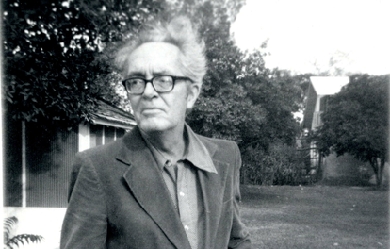
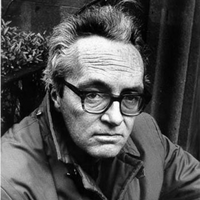
Alan Dugan (February 12, 1923– September 3, 2003) was an American poet. His first volume Poems published in 1961 was a chosen by the Yale Series of Younger Poets and went on to win the National Book Award for Poetry and the Pulitzer Prize for Poetry. His last volume, entitled Poems Seven: New and Complete Poetry, was published in 2001 by Seven Stories Press in New York and won Dugan a second National Book Award. Since his death in 2003, a complete volume of collected poetry has yet to appear.
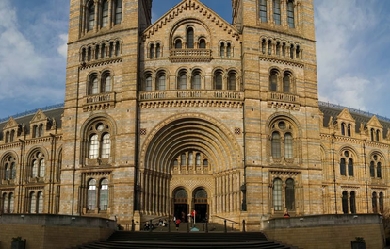
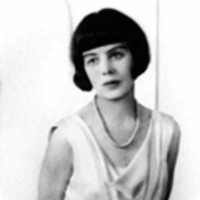
Elizabeth Daryush (8 December 1887 – 7 April 1977) was an English poet. Life Daryush was the daughter of Robert Bridges; her maternal grandfather was Alfred Waterhouse. She married Ali Akbar Daryush, whom she had met when he was studying at the University of Oxford, and thereafter spent some time in Persia; most of her life was spent in Boars Hill, outside Oxford, where the Elizabeth Daryush Memorial Garden is named for her. Writings Poetry Daryush, daughter of English poet laureate Robert Bridges (some of her early work was published as 'Elizabeth Bridges’), followed her father’s lead not only in choosing poetry as her life’s work but also in the traditional style of poetry she chose to write. The themes of her work are often critical of the upper classes and the social injustice their privilege levied upon others. This characteristic was not present in her early work, including her first two books of poems, published under the name Elizabeth Bridges, which appeared while she was still in her twenties. According to John Finlay, writing in the Dictionary of Literary Biography, Daryush’s “early poetry is preoccupied with rather conventional subject matter and owes a great deal to the Edwardians.” Syllabic style Daryush took her father’s experiment in syllabic verse a step farther by making it less experimental; whereas Bridges’ syllable count excluded elidable syllables, producing some variation in the total number of pronounced syllables per line, Daryush’s was strictly aural, counting all syllables actually sounded when the poem was read aloud. It is for her successful experiments with syllabic meter that Daryush is best known to contemporary readers, as exampled in her poem Accentedal in the quaternion form. Yvor Winters, the poet and critic, considered Daryush more successful in writing syllabics than was her father, noting that her poem Still-Life was her finest syllabic experiment, and also a companion-piece to Children of Wealth. Winters considered the social context of Still Life, which is nowhere mentioned, yet from which the poem draws its power. Characteristics Beyond its social content, Daryush’s work is also recognized for a consistent and well-defined personal vision. As Finlay noted, "For her. . .poetry always dealt with the `stubborn fact’ of life as it is, and the only consolations it offered were those of understanding and a kind of half-Christian, half-stoical acceptance of the inevitable." However, he also argued that Daryush’s best poems transcend such fatalism, “dealing with the moral resources found in one’s own being. . .and a recognition of the beauties in the immediate, ordinary world around us.” In many of her terse short poems, there is formal and intellectual mastery; her last, longest and most amibitious poem, ‘Air and Variations,’ was a formal tribute to Gerard Manly Hopkins Daryush has been described as a pioneer technical innovator, a poet of the highest dedication and seriousness whose poetry grapples with life’s intensest issues.
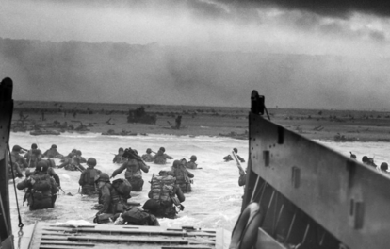
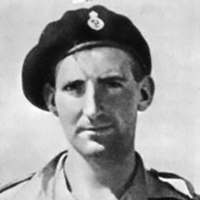
Keith Castellain Douglas (24 January 1920– 9 June 1944) was an English poet noted for his war poetry during the Second World War and his wry memoir of the Western Desert campaign, Alamein to Zem Zem. He was killed in action during the invasion of Normandy. Poetry Douglas described his poetic style as “extrospective”; that is, he focused on external impressions rather than inner emotions. The result is a poetry which, according to his detractors, can be callous in the midst of war’s atrocities. For others, Douglas’s work is powerful and unsettling because its exact descriptions eschew egotism and shift the burden of emotion from the poet to the reader. His best poetry is generally considered to rank alongside the 20th century’s finest soldier-poetry. In his poem, “Desert Flowers” (1943), Douglas mentions World War I poet Isaac Rosenberg, claiming that he is only repeating what Rosenberg has already written. Early life Douglas was born in Tunbridge Wells, Kent, the son of Capt. Keith Sholto Douglas, MC (retired) and Marie Josephine Castellain. His mother became unwell and collapsed in 1924 of encephalitis lethargica, never to fully recover. By 1926, the chicken farm set up by his father had collapsed. Douglas was sent to a preparatory school (Edgeborough School in Guildford) the same year. The family became increasingly poor, and his father had to leave home in early 1928 to seek better employment in Wales. The persistent ill-health of Marie led to the collapse of the marriage of his parents by the end of that year, and his father remarried in 1930. Douglas was deeply hurt by his father not communicating with him after 1928, and when Capt. Douglas did write at last in 1938, Keith did not agree to meet him. In one of his letters written in 1940 Douglas looked back on his childhood: “I lived alone during the most fluid and formative years of my life, and during that time I lived on my imagination, which was so powerful as to persuade me that the things I imagined would come true.” Education Marie Douglas faced extreme financial distress, so much so that only the generosity of the Edgeborough headmaster Mr. James permitted Douglas to attend school in 1930–1931, his last year there. Douglas sat in 1931 for the entrance examination to Christ’s Hospital, where education was free and there was monetary assistance to cover all other costs. He was accepted, and joined Christ’s Hospital, near Horsham, in September 1931, studying there till 1938. It was at this school that his considerable poetic talent and artistic ability were recognised. So was his cavalier attitude to authority and property, which nearly led to expulsion in 1935 over a purloined training rifle. In surprising contrast, he excelled as a member of the school’s Officers Training Corps, particularly enjoying drill, although he was philosophically opposed to militarism. University After his bruising brush with authority in 1935, Douglas settled down to a less troubled and more productive period at school, during which he excelled both at studies and games, and at the end of which he won an open exhibition to Merton College, Oxford in 1938 to read History and English. The First World War-veteran and well-known poet Edmund Blunden was his tutor at Merton, and regarded his poetic talent highly. Blunden sent his poems to T. S. Eliot, the doyen of English poetry, who found Douglas’s verses 'impressive’. Douglas became the editor of Cherwell, and one of the poets anthologised in the collection Eight Oxford Poets (1941), although by the time that volume appeared he was already in the army. He does not seem to have been acquainted with somewhat junior but contemporary Oxford poets such as Sidney Keyes, Drummond Allison, John Heath-Stubbs and Philip Larkin, who would make names for themselves. At Oxford, Douglas entered a relationship with a sophisticated Chinese student named Yingcheng, or Betty Sze, the daughter of a diplomat. Her own sentiments towards him were less intense, and she refused to marry him. Yingcheng remained the unrequited love of Douglas’s life and the source of his best romantic verse, despite his involvements with other women later, most notably Milena Guiterrez Penya. Military service Within days of the declaration of war he reported to an army recruiting centre with the intention of joining a cavalry regiment, but like many others keen to serve he had to wait, and it was not until July 1940 that he started his training. On 1 February 1941 he passed out from the Royal Military College, Sandhurst, the British Army training academy for officers, and was commissioned into the 2nd Derbyshire Yeomanry at Ripon. He was posted to the Middle East in July 1941 and transferred to the Nottinghamshire (Sherwood Rangers) Yeomanry. Posted initially at Cairo and Palestine, he found himself stuck at Headquarters twenty miles behind El Alamein as a camouflage officer as the Second Battle of El Alamein began. At dawn on 24 October 1942, the Regiment advanced, and suffered numerous casualties from enemy anti-tank guns. Chafing at inactivity, Douglas took off against orders on 27 October, drove to the Regimental HQ in a truck, and reported to the C.O., Colonel E. O. Kellett, lying that he had been instructed to go to the front (luckily this escapade did not land him in serious trouble; in a reprise of 1935, Douglas got off with an apology). Desperately needing officer replacements, the Colonel posted him to A Squadron, and gave him the opportunity to take part as a fighting tanker in the Eighth Army’s victorious sweep through North Africa vividly recounted in his memoir Alamein to Zem Zem, illustrated with his own drawings. Death Captain Douglas returned from North Africa to England in December 1943 and took part in the D-Day invasion of Normandy on 6 June 1944. He was killed by enemy mortar fire on 9 June, while his regiment was advancing from Bayeux. Captain Leslie Skinner (regimental chaplain) buried him by a hedge, close to where he had died on "forward slopes point 102". Shortly after the war his remains were reburied at Tilly-sur-Seulles War Cemetery (14 km south of Bayeux) in plot 1, row E, grave number 2. Bibliography * Selected Poems (Keith Douglas, J.C. Hall, Norman Nicholson) (1943) * Alamein to Zem Zem (1946), reprinted 1966 * Collected Poems (Editions Poetry London 1951), reprinted 1966 * Selected Poems (Faber 1964) * The Complete Poems (Faber & Faber 1978), reprinted in 1987, 1997, 2011 * Alldritt, Keith. Modernism in the Second World War ISBN 0-8204-0865-4 * The Letters of Keith Douglas edited by Desmond Graham (Carcanet Press, 2000) ISBN 978 1 857544 77 0 Biography * Keith Douglas, 1920–1944 by Desmond Graham (OUP, 1974) ISBN 0-19-211716-5 References Wikipedia—https://en.wikipedia.org/wiki/Keith_Douglas
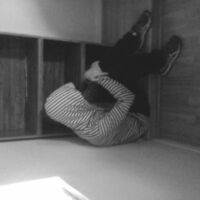
my life has always been filled with hardship and pain, but i keep pushing for every inch i can take. evil had taken hold of my soul for a good amount of time but one amazing person i had met had completely broke its hold over me..... poems have been in my blood, my favorite poet and my inspiration has ALWAYS been Edgar Allen Poe. I've always had the philosophy of your poem isn't true unless its comes from the heart. Which is the only way i can write. It proves as a outlet in dark times, Or as the only way to express my hate to the world, or the vast love i have for my beautiful fiance...... young and wise is the way I've been described by many I am 17.... madly in love, and loved by many for the first time in feels like forever email any personal comments to me or if you wish to ask any questions please.


